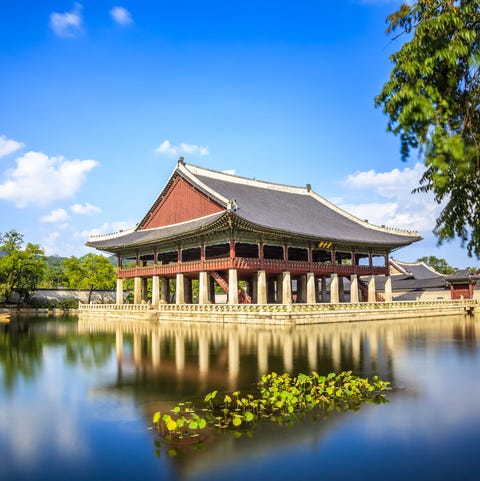Gyeongbokgung Palace
Historic royal palace with changing of the guard ceremony
Historic royal palace with changing of the guard ceremony





161 Sajik-ro, Jongno District, Seoul, South Korea Get directions

"At Gyeongbokgung Palace I could rent a hanbok for free entrance and take part in Seollal experiences beyond photos, such as folk games like tuho (arrow-throwing) and jegichagi (hacky-sack), plus arts and crafts at the National Folk Museum of Korea on the palace grounds." - Jasmine Ting

"A grand setting that appears as the backdrop to Jinu’s bad-boy character-building flashbacks." - Ali Wunderman

"A grand royal palace in Seoul whose grounds include a pond with a central pavilion; its historic architecture and scenic spots—notably at dusk—help reinforce the city's cozy, picture-perfect character." - Stacey Leasca Stacey Leasca Stacey Leasca is an award-winning journalist and co-founder of Be a Travel Writer, an online course for the next generation of travel journalists. Her photos, videos, and words have appeared in print or online for Travel + Leisure, Time, Los Angeles Times, Glamour, and many more. You'll usually find her in an airport. If you do see her there, please say hello. Travel + Leisure Editorial Guidelines

"A major palace in Seoul that is especially picturesque in autumn, when colorful foliage highlights its traditional architecture. It serves as an emblem of the city's cultural heritage and provides a striking counterpoint to Seoul’s fast-paced, cutting-edge modernity—making it a natural stop for solo travelers drawn to the city’s blend of tradition and innovation." - Lydia Mansel Lydia Mansel Lydia Mansel is a writer with more than eight years of experience editing and writing for both brands and online publications—with a particular focus on travel, fashion, and lifestyle. She’s also the founder of the travel site justpacked.com. Travel + Leisure Editorial Guidelines

"This “Palace Greatly Blessed by Heaven” was once the heart of Korea. It was the power center of the Joseon dynasty (1392–1897), and was originally built in 1395—some new digs for a new dynasty. Like the Forbidden City in Beijing , the palace is a complex of buildings—a throne hall, the king’s living quarters and more—a sort of city inside a city, accented by gardens and pavilions. The Japanese flattened the place in the 1590s, and the site remained a ruin until a complete reconstruction in 1867 brought back more than 500 buildings. At the Gwanghwamun Gate, soldiers, beautifully costumed in red robes, still perform the changing of the guard. Seoul has other palaces, but this is the one to see if your time in town is limited."
